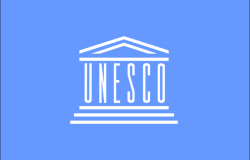In the Age of Recurring Systemic Crises, UNESCO Futures Literacy Becomes a Core Global Policy Task

Roland Benedikter argues that UNESCO's Futures Literacy approach is key to ensuring global policies are appropriate for and taken up by local communities.
UNESCO is the educational, scientific and cultural organization of the United Nations. Its mission is to unite humanity through shared ideas – and by the joint work on those ideas. The goal is to develop common global policies that help all people on the planet.
To this end, for several years UNESCO has developed as one of its centerpieces the “Futures Literacy” approach. Futures Literacy is about the question: How can we overcome the poverty of imagination by the means of “horizontal”, participatory and equality-based communication processes to develop better policies?
To answer this question, Futures Literacy builds on the organization of futures dialogues between people of all ages, professions, genders, classes and social, ethnic and cultural affiliations. The dialogue is organized territorially within and across nations. It is intended to open up new option for participation in socially constructed futures in schools, universities and civil society – and thus to allow these futures to develop and mature together as an open social project. Politicians and citizens alike can be inspired by these processes for innovation design approaches. Employees and managers from a wide range of organizations and sectors – from the skilled trades to banking, finance, business and technology – can be trained in “futures readiness,” as recommended by the United Nations as the new transversal basic skill to master current and upcoming crises. Futures Literacy takes dealing with possible futures to a new level, as it is about “learning a new skill for deep transformation”. This strengthens the resilience and self-renewal capacity of people and organizations for times of both prosperity and crisis. It allows a diversity of ideas to sprout; makes existing ideas clearer; aligns different expectations, hopes and concerns; and is a project of joy in the panhuman spirit of UNESCO. Here, “future” is understood not primarily as a desired or projected place or space, but as a primordial human capacity accessible to every human being. It is not somewhere far away, but here and now in the existing human beings themselves.
Because of all this, UNESCO Futures Literacy is recommended by the UN as an integrative education, training and policy approach for all societal fields, and in particular to policy-makers. Applied broadly across social sectors, it can bring about change in the sign of improvement – including in people’s feelings and sense of belonging. Being included in a Futures Literacy dialogue, people feel involved, and politics achieves a broader scope. Futures Literacy also serves as a catalyst for inter- and trans-disciplinarity in the social sciences; as a basis for regional development (including economics, law, politics and the educational sector); and for the integration of strategic approaches, including territories’ sustainability and resilience strategies. Futures Literacy Design becomes important here. According to UNESCO, thinking about the future – and learning how to think about it – is an educational task in the first place that should be introduced at all levels. To achieve this, UNESCO Futures Literacy explicitly combines theory (“Futures Literacy”, short: FL) with inclusive work on the ground and by the means of practices of “real world laboratories” (“Futures Literacy Laboratories”, short: FLL). In this way, Futures Literacy is intended to serve as a bridge between science and practice and between policy-makers and citizens, managers and employees.
As the Futures Literacy Summit 2020 exemplarily pointed out, the basic idea of Futures Literacy is that there is not one future, but many futures. These exist simultaneously side by side and interact with each other in a constant interplay between the people who carry them. Moreover, they all change with the passage of time. Therefore, it is necessary to consider them in their both synchronic and diachronic diversity – and to integrate them, which requires mediation and dialogue. This dialogue should not only take place for a certain period of time, but basically all the time, and it should be organized by societies as a constant work-in-progress since it is an open and never-ending process. UNESCO is therefore not so much concerned with “future education”" (singular), but rather with “futures education” (plural). Importantly, this future education should not only take place “from top to bottom”, but also “bottom up”, ie. reciprocally and transversally. It is thus not only an individual human process of development, but also a social process.
The goal of this process is easy to tell. Futures Literacy as a new basic human capacity should make it possible to work better with those futures which play an essential identity- and reality-forming role in individuals as well as in communities. It should make people more aware of the role of futures and allow them to make better use of these as consciousness-forming building blocks through community reappraisal and renewal. This involves images and feelings, thought and action in equal measure. Special attention is given to “teach the teacher”, i.e. to the training of teachers, stimulators, leaders and multipliers. As the main framework for this, the UNESCO Strategy 2022-29 is concerned with gender, the Global South and, in particular, with the youth, which, according to the UN, will play a crucial role in the post-Covid 19 phase of transnational and global development. To inspire, reduce uncertainty and provide courage the task is to train the new generations in futures knowledge, and even more in futures preparedness. This is a skill that, given the ever-shorter half-lives of skills and technologies in our time, must become a fundamental cross-cutting capacity – and thus also a school subject as part of social and participatory education.
All of this should be accomplished according to a few guiding principles. In them, the spirit and goals of this initiative are nicely summarized in a short form and are easy to remember. It is first the UNESCO motto: “Building peace in the minds of men and women”. And it is, then, the three “Futures Literacy” slogans in particular: “Overcoming the Poverty of Imagination,” “Building Learning Futures,” and “Democratizing People’s Images of the Future.” Together, these four slogans describe a grand and inspiring task.
The formal foundations of UNESCO’s Futures Literacy are found in UNESCO’s 2022-29 Strategy, and in the strategy for the UN Decade 2030, on which the achievement of the global Sustainable Development Goals (SDGs) depends. But Futures Literacy is also related to the overall UN vision for the same period, as presented by UN Secretary-General António Guterres in two speeches on the occasion of the 75th anniversary of the United Nations in 2020, where he sketched a comprehensive future of humanity. Together with other UN sub-strategies, the image of a desirable future is to gradually appear by means of futures education – a “futures nod” that is not “made only from above” but is also actively shaped “from below”, ie. by as many people as possible and shared in feeling, thinking and wanting in concrete life environments.
In essence, UNESCO’s future education is based on three core methodological approaches in dealing with futures. These are
1. planning ahead (“Forecast”);
2. looking to future scenarios (“foresight”); and
3. anticipating futures in the present (“anticipation”).
These three approaches address different levels of expectation and reality. They use different, complementary methods.
1. Forecast. Governments, diplomats, public officials, and business leaders usually operate in criteria of “planning ahead”: i.e., planning for 4-5-year terms in office in the short term, with a high degree of precision in details and particulars.
2. Foresight. In contrast, beyond-tenure strategy advisory bodies such as the “Future Circle” (Zukunftskreis) for the German federal government, which is supposed to anticipate the society of the future for Germany, operate in terms of “looking ahead”: that is, drafting possible and probable scenarios in the medium- to long-term perspective of 10-30 years.
3. Anticipation. UNESCO adds to this the nascent discipline of “anticipation”. Anticipation is the work with possible futures in the present. Here, individual and community expectations of the future in the macro-perspective of 30-50 years are confronted with each other in conversation and concretized in options for awareness and action here and now, ie. in the present. This creates an atmosphere of readiness and inspiration. The people concerned become more awake, attentive, flexible, and joyful. They acquire an array of futures, instead of concentrating only on one while neglecting others.
UNESCO’s goal is bringing these approaches together. This goal is connected to the emergence of a first veritable “glocal” future consciousness of a population in a particular and concrete – and for a particular and concrete – territory, but in global exchange and in cross-language, cross-generational, cross-social and cross-cultural stimulation.
To this end, UNESCO has developed sophisticated theoretical foundations and a unique methodology. It includes the broad application of “Futures Literacy Laboratories” (FLL) for civil society or for individual groups by means of an adapted “real world laboratory” approach on site. This can happen in the village or in the city, in public or private institutions. A variety of different formats and events for large and small groups are conceivable. The only important thing is that the UNESCO approach is only called so if it is also applied exactly according to its rules. There are many methods of “working with futures” nowadays, and most if not all of them are of great value. But there is only one UNESCO “Futures Literacy” approach.
If we summarize all this and look at the options: what can the UNESCO futures education approach bring to global policy? Can it help to better implement the fundamental tool of anticipation for fostering and shaping forward-oriented policies? Can it better connect the periphery and the center of discourses and narratives? Can it motivate the younger generations to participate more actively in policy life? Can it maybe even... just be fun, provide for conversations and bring people together both in their ideas and hearts, thus strengthening the contextual politics of policy-making? Can it get generations and genders, leaders and employees thinking and talking together about the essence of what is needed? As diverse these paths are, they all converge in the need for future(s).
Conclusion? The UNESCO “Futures Literacy” approach incorporates both traditional futures research, transformation research and sustainability research thus inspiring global policy by searching for syntheses in a strategic direction of vision. While traditional futures research and futures education are usually about the development and application of “tools”, UNESCO’s “Futures Literacy” is about understanding futures as a personal and collective human capacity. To this end, UNESCO includes the mentality aspect, both individually and collectively. This has to do with personal maturation processes as well as with the organization of processes of collective intelligence, as recommended today by brain research and cybernetics.
With the upgrading of the future to a human ability, a grand task of humanity in times of re-globalization is described. Because networking is so important in our fast-moving times, a network of UNESCO/UNITWIN “Futures Literacy Chairs” is emerging world-wide. These are “chairs” at research and teaching institutions that investigate, theorize and practice Futures Literacy. Their activities are intended to reflect the global spirit of UNESCO, to take it up locally, to apply it in a “glocal” perspective and to constantly develop it together with people in their practical living environments – in all liveliness and diversity and in the meeting space between imagination and policy.
In the end, the UNESCO “Futures Literacy” approach is concerned with reforming global policy by means of a “re-globalization” process that today opens up a new field of research and teaching. One of the aspects of this field is exactly “glocalization”. It involves adapting global policies more precisely to specific territories, in other words: to “contextualizing” them so that they have less negative and more positive effects that are better suited to the needs of local populations. “Re-globalization” and “glocalization” are to be transformed from slogans into concrete abilities, activities and practices of global policy. Global policy can benefit from futures education – especially from one that, among many other effects, features a community-building effect.
Roland Benedikter is Co-Head of the Center for Advanced Studies of Eurac Research Bozen-Bolzano, Italy, and Research Professor of Multidisciplinary Political Analysis in residence at the Willy Brandt Centre of the University of Wroclaw, Poland. Homepage / Contact: roland.benedikter@eurac.edu.

